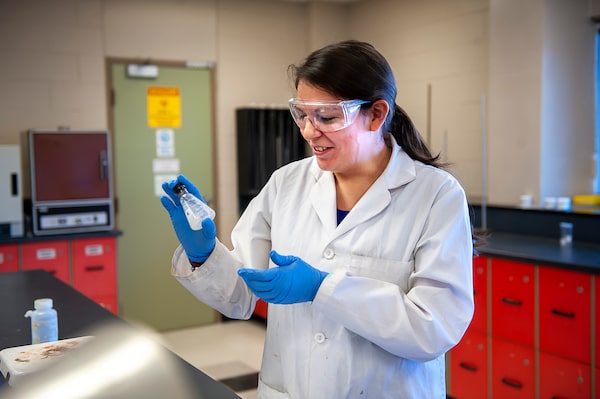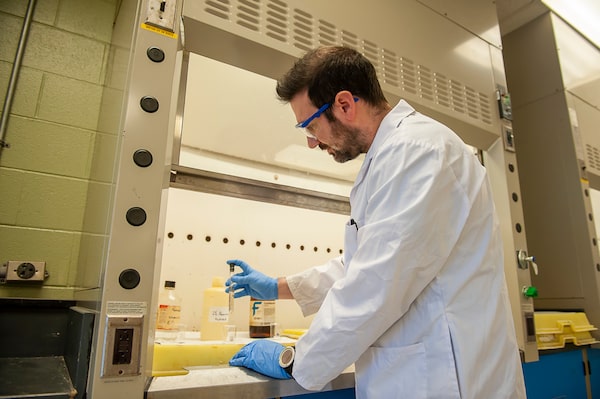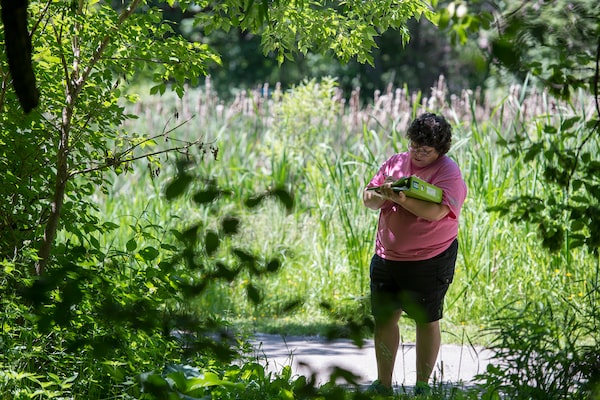
Polytechnic institutions have added to their environmental technician programs because of rising demand from the industry, partly due to the 2000 E.coli outbreak in the water supply of a small Ontario town.FANSHAWE COLLEGE
If you want to understand how the environmental studies landscape in Canada has changed, think back to Walkerton, says Sean Beingessner.
In 2000, an e.coli outbreak in the water supply of the small Ontario town sickened hundreds of residents and killed seven. The disaster resulted in more stringent training and water-testing requirements for water-system operators. It was shortly afterwards that Algonquin College’s Water and Wastewater Technician program began, in response to an unexpected new industry need borne out of changing social and legislative norms.
“Suddenly water treatment was a much more professional field, and required a lot more knowledge, training and expertise,” says Beingessner, program director of the Environmental Management and Assessment program at Algonquin College, a polytechnic institute that focuses on hands-on learning.
“That’s what’s happening across the entire environmental field now. Environmental assessments are much more sophisticated, the technology is more complex, and there’s more legislation and more scrutiny.”
In 2013, those shifts led to Algonquin establishing its current Environmental Technician program, which Beingessner says seeks to address growing industry and government demand for graduates with more advanced technical skills and scientific knowledge.
It’s one of a growing number of options nationwide that students interested in environmental studies can choose.
They include graduate certificates like Algonquin’s program, multiyear diplomas like the three-year Environmental Technology program at London, Ont.’s Fanshawe College, and degree-completion programs like the British Columbia Institute of Technology’s Environmental Engineering Program, which admits students who have completed a portion of a relevant degree. All three colleges are polytechnic institutes where applied learning is the focus.
The balance of field and lab work varies from program to program, as does the mixture of theory and hands-on practice, and the availability of co-ops and internships. But they all reflect the rapidly professionalizing nature of the field.
“This program was a direct response to growing industry need,” says Adam Shane, the academic chair of Algonquin’s School of Applied Science and Environmental Technology.
Every program has an advisory committee that meets with industry leaders three times a year to ask about emerging labour market trends. “This has been one of those areas that’s grown tremendously in the past decade,” he says.

Students can emerge from polytechnics with solid skills in sample processing, and the environmental impacts of development, as well as understanding of technological advancements in the industry.FANSHAWE COLLEGE
Algonquin’s approach has been to develop the program as a graduate certificate. Students who already have an appropriate diploma or degree can take the college’s one-year program (including a co-op placement). They’ll emerge with expertise in field sampling, sample processing, and the environmental impacts of development, as well as understanding of technological advancements in the industry.
Other programs are targeted to students without existing knowledge. Fanshawe’s Environmental Technology program, aimed at students who may not have a prior degree, includes courses in air, water and soil sampling, statistics, environmental fundamentals and mathematics.
“Ours used to be called Air, Water and Field Resource Technology, which was quite a mouthful,” says Cathy Gall, the program’s co-ordinator. “So it was changed to Environmental Technology, but that really reflects how much more well-rounded it is now.”
The name also reflects the growing importance of having expertise with technology, both new and old.
“The type of instrumentation we deal with has changed dramatically,” says Gall. “We always had PH meters and spectrometers, but now we have two full courses in state-of-the-art instrumentation … definitely the sophistication of the instruments students work with, and which is found in the industry, has increased.”
At Algonquin, employer feedback has led to a greater focus on emerging technology, from geographical information systems (GIS) to big data and artificial intelligence (AI).
At Kitchener’s Conestoga College, similar feedback has shifted the focus in its Environmental Engineering Applications program, a one-year graduate certificate. Program co-ordinator Coby Lamarche, says industry feedback has led the college to introduce recently an entirely new course, focused on identifying and remediating vapour intrusion into buildings from contaminants in the ground.
Keeping up to speed on employer needs is also top of mind on the other side of the country, at the British Columbia Institute of Technology’s (BCIT) two-year Environmental Engineering program. The BCIT program began as a bachelor’s degree in 1996, and today is a degree-completion program, which offers the third and fourth year of a bachelor’s degree.
It too has evolved to accommodate the growing professionalization of the field. But it also underwent a major overhaul in 2009 to focus more on questions of sustainability, driven by the changing demands of industry, public policy and social pressures.
“We really began to understand that it shouldn’t only be a hard-core engineering programming program, where students only gain experience sampling, testing, modelling and technical skills,” says program head Olga Petrov. “They need to learn about the economic and social components of sustainability, as well as Indigenous perspectives on development and sustainability.” The latter, of course, is increasingly critical to development projects of any kind in Canada.
The program continues to be updated regularly to reflect new policies and social developments. That focus on sustainability and bigger environmental themes are driven in large part by the program advisory committee, says Petrov.

Fanshawe’s Environmental Technology program includes courses in air, water and soil sampling, statistics, environmental fundamentals and mathematics.FANSHAWE COLLEGE
The result, she says, is a program that graduates students with broad expertise in fieldwork, lab work, and knowledge of environmental issues around air, water and earth. Hiring percentages of its graduates are more than 90 per cent, with students working with natural resources companies, consulting firms, environmental non-governmental organizations, regulatory agencies, and all levels of government.
Those robust numbers are expected to continue.
“It wasn’t that long ago that we didn’t understand that [the insecticide] DDT or lead pipes were a problem,” says Conestoga’s Lamarche. “It’s only a matter of time before we identify new hazards that we need to address, and that’s going to keep graduates employed for a long time to come.”
For Algonquin’s Beingessner, it’s a bigger shift – in industry, government and society at large – that will continue to drive the field.
“Every employer that our graduates work for has made a point of elevating environmental issues,” he says. “If I’d have asked a class 15 years ago, ‘do you think humans are changing the climate?’ it would have been a 50-50 split. Today it would be pretty much 100 per cent ‘yes.’ That reflects a shift in society that we see in employers, in government, and is really motivating the growth in this field. That’s not going to stop.”